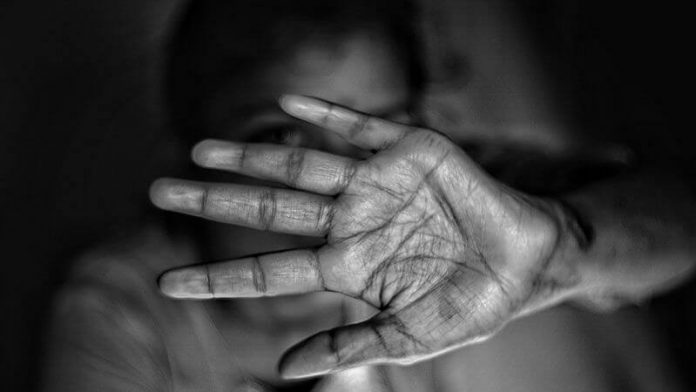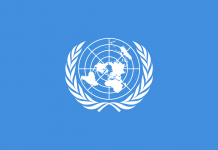This article is written by Himanshu Goyal from SVKM’s NMIMS University, Bengaluru. This is an exhaustive article which deals with violence and the state of emergency in Ethiopia.
Table of Contents
Introduction
The term “state of emergency” refers to a legislative framework in which governmental institutions are given extraordinary powers to deal with existential threats to public order. In terms of human rights, states of emergency are critical because the suspension of legal orders frequently leads to systematic human rights breaches. “The same political pressures that lead to states declaring states of emergency also create strong incentives for states to violate their human rights obligations during emergencies.”
Under the Constitution, the Ethiopian government has the authority to declare a state of emergency, and it is required to consider the above major issues by following under the substantive and procedural requirements in the binding international and regional covenants, as well as the “non-binding,” if not weak and inapplicable, international soft law standards. Ethiopia’s government announced a state of emergency in Tigray on Wednesday after Prime Minister Abiy Ahmed authorized a military reaction to a deadly attack on a federal troop base by the region’s ruling party. The Federal Council of Ministers adopted the decree, “recognizing that illegal and violent acts within the National Regional State of Tigray are undermining the constitution and constitutional order,” according to Abiy’s administration.
About Tigray People’s Liberation Front (TPLF)
According to official records, the Tigray People’s Liberation Front (TPLF) is an ethnic nationalist paramilitary group, political party, and former ruling party of Ethiopia, that was founded on 18 February 1975 in Dede bit, north-western Tigray. It had developed from a handful of men to Ethiopia’s most formidable armed liberation force in just 16 years. From 1989 to 2018, it led the Ethiopian People’s Revolutionary Democratic Front (EPRDF), a coalition of movements. It waged a 15-year struggle against the Darg dictatorship, which was deposed in 1991. The TPLF was at the forefront of Darg’s defeat, owing largely to its superior warfighting capabilities. Now Ethiopia’s Tigray region is ruled by the powerful Tigray People’s Liberation Front (TPLF). Ethiopian Prime Minister Abiy Ahmed made peace with Eritrea in 2018, for which he received the Nobel Peace Prize in 2019. Eritrea is regarded as an enemy by the TPLF. Abiy postponed the general elections to 2021 in August 2020, citing the COVID-19 pandemic. The TPLF accused him of usurping power and announced elections in Tigray in September 2020. This heightened the tensions.
Ethnic divide in Ethiopia
Ethiopians are ethnically diverse, with the most significant differences based on linguistic classification. The vast majority of languages are Semitic, Cushitic, or Omotic, and are all members of the Afro-Asian language family. A small number of languages are Nilotic, which is part of the Nilo-Saharan language family. Oromo make up 34.4 per cent of the population, Amhara make up 27 per cent, Somali make up 6.2 per cent, Tigray makes up 6.1 per cent, and others make up 26.3 per cent of the population.
All Ethiopian languages have official state recognition under the Constitution. However, Amharic is the federal government’s “working language,” and it is one of the two most widely spoken languages in the country, along with Oromo. Ethiopia’s population is made up of 43 per cent orthodox Christians, 34 per cent Muslims, 20 per cent protestants, 1.5 per cent traditional beliefs, 1 per cent Roman Catholics, and 0.5 per cent others.
Abiy Ahmed – from Nobel peace prize to leading the country to war
Abiy Ahmed took office as Prime Minister in 2018 at the age of 41, against the backdrop of anti-government protests. His youthful vigour and bright smile offered hope. In 2019, Ahmed was awarded the Nobel Peace Prize for his efforts to end hostilities with Eritrea. Abiy’s ruling Ethiopian People’s Revolutionary Democratic Front (EPRDF) coalition was in its third decade in power and had been dogged by allegations of repression and human rights violations. Opponents were imprisoned, and journalists were silenced. The EPRDF had presided over rapid economic growth, but many people felt excluded from its benefits.
This sense of exclusion, particularly among the country’s largest ethnic group, the Oromo, fuelled a wave of protests. Abiy, an Oromo, was promoted to the top job and immediately began addressing concerns during a frenzy of reforms. He freed thousands of political prisoners, relaxed restrictions on independent media, and welcomed the country’s once-banned opposition groups back from exile. He supported a woman for president, established gender parity in the cabinet, and established a peace ministry. The peace treaty with Eritrea and the reopening of the common border were the crowning achievements. Abiy toured the country and spoke about uniting the multi-ethnic nation. He also wanted to emphasize the importance of diversity. He was widely popular, partly as a result of the country’s dramatic changes, but his personal story also played a role in his appeal. In 2018, there were large rallies in support of the prime minister’s reforms. Born to Christian and Muslim parents in Beshaha, a coffee-farming district in southwestern Ethiopia, He was quickly regarded as someone capable of uniting a country that was becoming increasingly divided.
Long-simmering tensions that had been kept under wraps throughout the days of authoritarian leadership began to boil over once the enthusiasm of Abiy’s early days as Prime Minister faded. His efforts to promote togetherness while celebrating diversity ran into difficulties. Thousands have been killed as a result of ethnic confrontations and attacks on individuals based on their ethnicity. Nearly two million people had evacuated their homes and were residing in other parts of the country in 2019. Assassinations of important figures, which had previously been rare, began to occur with worrying frequency. In a single night, hundreds of miles apart, the army’s chief of staff and the leader of the country’s second-largest region were killed. Many other low- and mid-level officials suffered similar fates. And, to quell the escalating violence, Abiy reverted to previous governments’ strategies. Multiple times, the internet and phone lines were turned off. The suspects have been apprehended. Some were later released after being imprisoned for weeks or months without being tried.
The assassination of popular Oromo musician Hachalu Hundessa in the capital, Addis Abeba, a year ago, exacerbated ethnic tensions and prompted increased security measures. More than 200 civilians were killed in the ensuing violence in Oromia, the country’s largest region, and Addis Ababa. Prominent opposition figures have been detained on suspicion of inciting or escalating violence. Many Oromo activists accused the prime minister of attempting to eliminate meaningful opposition in Oromia as a result of this. Relations with another of the country’s ethnically based states, however, have tarnished his reputation.
Problems with Tigray People’s Liberation Front (TPLF)
The Tigray region’s President accused the Prime Minister of attempting to “side-line and even criminalize” the TPLF. Federal funding to the region was also significantly reduced, with resources flowing only to local governments to protect basic services.
Debretsion G. Michael, the region’s president, warned the public days before the federal forces’ assault that Prime Minister Abiy Ahmed was planning an attack to punish Tigray for its defiance. Although hard evidence is lacking, the TPLF is accused of being behind much of the internal strife and ethnic violence that has afflicted Ethiopia since the Abiy administration took power. Whether or not these reports are true, Ethiopian social media networks are rife with accusations that the TPLF has fomented conflict by organizing, training, and financing forces opposed to the federal government, primarily through surrogates and breakaway groups.
The democratic opening, he has created has yet to fully address the many ethnic grievances that had been bottled up under the TPLF, and sporadic ethnic flare-ups continue to occur across the country, even as the region struggles to cope with rising COVID-19 infection rates, with serious consequences for economic and social life. The war in Tigray is unfortunate and may have tragic consequences, including the loss of innocent lives. Both sides must take extra precautions to protect civilians.
State of emergency in Amhara and Tigray
Ethiopia’s government declared a state of emergency in Amhara and Tigray on 4 November 2018 after Prime Minister Abiy Ahmed ordered a military response to a deadly attack on a federal troop camp by the ruling party of the restive region. Tigray held regional elections in September, defying the federal government, which called the vote “illegal.” In recent days, the dispute has heated up, with both sides accusing the other of plotting a military conflict.
According to a statement issued by Abiy’s office, the declaration was made by the Federal Council of Ministers “recognizing that illegal and violent activities within the National Regional State of Tigray are endangering the constitution and constitutional order.”
According to the office of Prime Minister Abiy Ahmed, the Tigray People’s Liberation Front (TPLF) attempted to steal artillery and other equipment from federal forces stationed there. Many senior Tigrayan officials have been detained, fired, or side-lined since Abiy took power in 2018, in what the federal government describes as a crackdown on corruption but Tigrayans see as repression of dissent.
“With this morning’s attacks, the last red line has been crossed, and the federal government is therefore forced into a military confrontation. The goal was to prevent instability from engulfing the country and region. Heavy fighting, including artillery fire, has erupted in the northern region, which borders Eritrea, according to two diplomatic sources in Addis Ababa. According to the PM office, the federal government has declared a state of emergency in Amhara and Tigray for six months, which will be overseen by the chief of staff of the armed forces. According to Netblocks, an internet access monitor, the internet was shut down in the region, confirming reports that authorities had shut down telephony.
Previous emergencies in the country
Ethiopian Prime Minister Hailemariam Desalegn declared a state of emergency on Sunday, October 9, 2016. The declaration of a state of emergency allows the military to enforce security across the country. It also restricts freedom of expression and access to information. According to media reports, the state of emergency has been declared for six months. Under certain conditions, Ethiopia’s constitution allows for a six-month state of emergency. The government declared a state of emergency in response to massive protests by the Oromo and Amhara ethnic groups against the government, which is controlled by the Tigrayan ethnic group, a smaller ethnic minority. Ethiopia has declared a state of emergency for the first time in approximately 25 years. In March 2017, Ethiopia’s parliament voted to extend the state of emergency for another four months.
Other countries affected by the emergency in Ethiopia
According to the Tigray Agricultural Bureau, an estimated 1.3 million ha of crops were damaged as a result of the crisis’s land destruction and plundering. While farmers face difficulties in gaining access to agricultural land to cultivate, displacement and looting have resulted in the loss of livestock for pastoralists and agro-pastoralists. High mortality rates have also been reported due to endemic animal diseases such as Peste des ruminants, sheep and goat pox, and lumpy skin disease.
According to the most recent estimates from the United Nations Office for the Coordination of Humanitarian Affairs, approximately 5.2 million people (91 per cent of the region’s population) are in desperate need of assistance. While humanitarian needs continue to rise, access to humanitarian aid and essential goods remains limited in Tigray due to ongoing insecurity and significant disruptions to basic services.
There is also a risk that Ethiopia’s other regions, such as Benishangul-Gumuz, Oromia, and the Southern Nations, Nationalities, and Peoples’ Region, will see an increase in ethnic and intercommunal violence, as well as civil unrest. To date, restrictions have prevented a full assessment of the crisis’s true magnitude and severity.
Significant macroeconomic challenges, such as the Tigray crisis, currency depreciation, and high inflation, will continue to have an impact on people’s access to food as prices rise and purchasing power declines. Many of these issues are being exacerbated by the impact of COVID-19, particularly on markets, employment, and remittance access. These will almost certainly exacerbate the effects of the lean season in Belg and Mehr-producing areas (March-May and June-September, respectively).
Condition of refugees and civilians amid the war
The United Nations High Commissioner for Refugees (UNHCR) is deeply concerned about the escalating crisis in northern Ethiopia, where ongoing clashes between the Ethiopian federal government and Tigrayan forces are forcing thousands of people to flee, more than half of whom are children.
Since the violence began in early November 2020, over 14,500 children, women, and men have fled to Sudan in search of safety, far outnumbering the current capacity to provide aid. Meanwhile, services for 96,000 Eritrean refugees inside Tigray have been severely disrupted, with reports of an increasing number of Ethiopians being internally displaced. The UNHCR urges all parties to ensure the safety and security of all civilians in Tigray.
Fighting in Tigray moved closer to the Shimelba refugee camp in Ethiopia yesterday, raising fears of mass displacement from the camp, which houses 6,500 Eritrean refugees. UNHCR is preparing to receive refugees who have already begun arriving at the Hitsats camp, which is 50 kilometres away and is considering additional relocation options in the region.
General living and working conditions in Tigray are deteriorating, with power outages and food and fuel supplies becoming increasingly scarce. Communications have been disrupted, resulting in an information blackout. The number of refugees seeking refuge in neighbouring Sudan is rapidly increasing, with over 4,000 crossing the border in a single day. The majority have crossed the border at Hamdayet in Kassala State, while others have crossed at Lugdi in Gedaref State.
People are arriving with few belongings, indicating that they fled quickly. The children who arrive are exhausted and terrified. The majority are from Humera in Tigray, with others coming from Rawyan and Dima in neighbouring towns. UNHCR and its partners are increasing assistance, but the number of new arrivals far outnumbers available capacity. The Hamdayet border crossing transit centre has a capacity of 300 refugees but is already overcrowded with 6,000 people. Inadequate sanitation facilities harm hygiene.
State of emergency to curb transmission of coronavirus
Under Article 93 of the Federal Democratic Republic of Ethiopia’s Constitution, the government declared a 5-month emergency to limit the spread of the Coronavirus (COVID-19).
The Prime Minister announced the Government’s decision to declare the State of Emergency, stating that it was made to protect current and future generations. Proclamation 3/2020, also known as the “State of Emergency Proclamation Enacted to Counter and Control the Spread of COVID-19 and Mitigate Its Impact,” was approved by the Council of Ministers and passed through the House of Peoples’ Representatives on Friday, April 10, 2020. Furthermore, the House approved the establishment of a seven-member State of Emergency inquiry board to oversee its implementation under the Constitution. Anyone who fails to comply with the obligations faces up to three years in prison or a fine ranging from 1,000 to 200,000 Ethiopian Birr.
Conclusion
The war in Tigray is unfortunate and may have tragic consequences, including the loss of innocent lives. Both sides must take extra precautions to protect civilians. Abiy’s protests that this is a war against the TPLF, not the people of Tigray, will only be credible if the government also ensures the safety and well-being of Tigrayans in other parts of the country. Many are not affiliated with the TPLF or the war effort, but they may face unjustified retaliation. But, for the time being, fears that Eritrea will be drawn into the war or that the war will escalate into a regional conflict are unfounded or, at best, premature.
References
- https://www.nytimes.com/2020/11/05/world/africa/ethiopia-tigray-conflict-explained.html
- https://www.hrw.org/world-report/2021/country-chapters/ethiopia
- https://www.wionews.com/world/ethiopia-declares-state-of-emergency-in-tigray-region-340539
- https://www.unhcr.org/ethiopia-tigray-emergency.html
- https://www.aljazeera.com/
- https://www.who.int/
- Ethiopia declares the State of Emergency to curb transmission of Coronavirus | Embassy of Ethiopia, London (ethioembassy.org.uk)
LawSikho has created a telegram group for exchanging legal knowledge, referrals, and various opportunities. You can click on this link and join:
https://t.me/joinchat/J_0YrBa4IBSHdpuTfQO_sA
Follow us on Instagram and subscribe to our YouTube channel for more amazing legal content.
 Serato DJ Crack 2025Serato DJ PRO Crack
Serato DJ Crack 2025Serato DJ PRO Crack











 Allow notifications
Allow notifications



